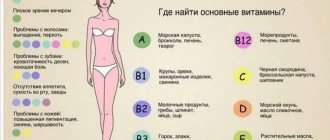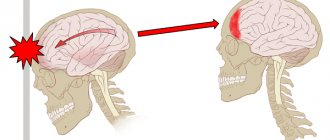General concept of the psyche. Forms of manifestation of the psyche and their relationship. Basic functions of the psyche.
Subject, object, tasks of scientific psychology.
Psychology is a science and system of knowledge about patterns, mechanisms, mental facts and phenomena in human life.
the object of psychology is clearly defined - the psyche, and the facts, patterns and mechanisms of the psyche are highlighted as the subject .
Among the diverse manifestations of the psyche, mental processes, mental states, and mental properties of the individual are distinguished.
There are cognitive, emotional, regulatory mental processes. The main function of cognitive processes is to reflect the properties of the external world and the internal characteristics of the body. Cognitive processes inform about the properties and phenomena of the surrounding world, are a source of various knowledge and help to discover the laws of development of nature and society. Cognition has 2 stages: figurative and logical. Imaginative cognitive processes – sensation, perception, representation. The processes of logical cognition include thinking.
Specific tasks of psychology:
1. Clarification of the nature and essence of mental activity and its connection with the brain, the function of which is this activity, its relationship to the objective world.
2. Study of the emergence and development of mental activity in the process of biological evolution of animals and the socio-historical development of human life. Clarification of the common and different in the psyche of people and animals, the characteristics of human consciousness in various social conditions of life.
3. Study of the emergence and development of the child’s psyche, as well as identifying the progressive transformation of the child into a conscious person; identifying how his psychological characteristics are formed in the process of training and education.
4. Study of the structure of human mental activity, the main forms of its manifestation and their relationship.
5. Study of the occurrence of sensations, perception, attention and other reflections of objective reality and how they regulate this reality.
6. Revealing the psychological foundations of teaching and upbringing, studying the qualities and characteristics of a teacher’s personality.
7.Identification and study of the psychological characteristics of various types of industrial, technical, creative and other types of human activity.
8. Study of the characteristics of mental activity of adults and children with defects of the brain and sensory organs.
Basic methodological principles of Russian psychology.
The essence of the scientific approach is expressed in methodological principles , i.e. settings that organize the direction and nature of the research. The psychology of consciousness, with its introspective method, is a subjectivist approach to the study of the psyche. Behaviorism is an example of an objectivist scientific approach to the reality under study: it implements the methodological principle of determinism - the inclusion of behavior in cause-and-effect dependencies on the surrounding world, etc.
The scientific approach in Russian psychology is based on the principles of determinism, the unity of consciousness and activity, the genetic principle, i.e. principle of development.
The relationship between everyday and scientific psychology.
Ideas about psychological phenomena and processes can be of different nature.
On the one hand, a person, as a conscious being, reflects and perceives the influences of the surrounding reality and other people, he thinks, feels and experiences, communicates with other people and influences them, and therefore, in the process of his life and activity, he constantly accumulates mental experience and psychological knowledge. All this is everyday psychology - psychological knowledge gleaned by people from everyday life, from direct interaction with the real world and other people. It usually has the following main distinctive characteristics:
concreteness, i.e. attachment to real situations, specific people, specific tasks of human activity;
intuitiveness, indicating a lack of awareness of their origin and patterns of functioning;
limitation, characterized by a person’s weak ideas about the specifics and areas of functioning of specific psychological phenomena;
reliance on observations and reflections, meaning that ordinary psychological knowledge is not subject to scientific comprehension;
limitations in materials, indicating that a person who has certain everyday psychological observations cannot compare them with similar ones from other people.
On the other hand, a person strives to systematize his ideas about the psyche from a scientific point of view. This is already scientific psychology, that is, stable psychological knowledge obtained in the process of theoretical and experimental study of the psyche of people and animals. They have their own characteristics:
generality, i.e. the meaningfulness of a specific psychological phenomenon based on the specifics of its manifestation in many people, in many conditions, in relation to many tasks of human activity;
rationalism, indicating that scientific psychological knowledge has been maximally researched and understood;
unlimited, i.e. they can be used by many people;
reliance on experiment, when scientific psychological knowledge is studied under various conditions;
weak limitation in materials, meaning that scientific psychological knowledge has been studied on the basis of numerous experiments and often in unique (specially created or specially observed) conditions.
Everyday and scientific psychology are interconnected and perform one function - to improve ideas about the human psyche. However, they play different roles. Everyday psychology only develops psychological ideas, while scientific psychology systematizes them.
General concept of the psyche. Forms of manifestation of the psyche and their relationship. Basic functions of the psyche.
Psyche is a function of the brain that consists in reflecting objective reality in ideal images, on the basis of which the vital activity of the body is regulated.
Functions:
1. Reflection of the influences of the surrounding reality. The subjectivity of mental reflection and the active transformation of what is reflected, characteristic of a person, in no way deny the objective possibility of correctly reflecting the surrounding world. In real life, a person, with the help of his psyche, reflects the influences of reality, records and comprehends them, forming in his mind a real picture of the world, in accordance with which he acts. The mental processes, states, education and properties of people, having a certain flexibility, allow them to adapt to the developing conditions of life and activity, transform them in accordance with their needs and interests.
2. Regulation of behavior and activity. The human psyche and consciousness, on the one hand, reflect the influences of the external environment, adapt to it, and on the other hand, regulate this process, making up the internal content of activity and behavior. The latter cannot but be mediated by the psyche, since it is with its help that a person realizes motives and needs, sets goals and objectives for activities, and develops ways and techniques to achieve its results. Behavior in this case acts as an external form of manifestation of the psyche.
3. A person’s awareness of his place in the world around him. This function of the psyche, on the one hand, ensures correct adaptation and orientation of a person in the objective world, guaranteeing him an effective understanding of all the realities of this world and an adequate attitude towards them. On the other hand, with the help of the psyche and consciousness, a person realizes himself as a person, endowed with certain individual and socio-psychological characteristics, as a representative of a particular society, social group, different from other people and in unique interpersonal relationships with them. A person’s correct awareness of his personal characteristics at the same time helps him adapt to other people, correctly build communication and interaction with them, achieve common goals in joint activities, and maintain harmony in society as a whole.
In everyday life, an individual is understood as a specific person, with all his inherent characteristics.
Psyche and body
tags:
Activity, System, Organism, Nervous, Activity, Psyche, Hemisphere, Character Psyche is a general concept denoting the totality of all mental phenomena studied in psychology.
1. The psyche and the body are two interdependent substances. They cannot function independently. On the one hand, each of them determines the characteristics of the other, on the other hand, they are not independent of external forces, therefore they themselves are subject to influence.
The existence of the human body is possible only if fairly strict conditions are met: temperature, acid-base balance, light conditions (other things being equal, in prolonged darkness, a person experiences depressive depression, increased irritability, etc.), pressure, oxygen conditions, and etc.
The psyche and body are inseparable from the natural environment. This is confirmed by the constant influence of external rhythms, which are reflected in the rate of metabolism, mental reactions, perceptions, and sensations.
Regulatory systems participate in maintaining balance between the dynamics of the internal and external environment of the human body (homeostasis):
immune;
endocrine;
nervous;
mental.
Each of them reacts to changes in the external environment (physical stress on the body, changes in ambient temperature lead to the activation of all systems) and internal (stress).
In addition, the normal functioning of the psyche is determined by the characteristics of the human body: gender, age, body structure. Research on the dependence of the psyche on biological factors is called biogenetics.
Among the works of the biogenetic direction, the work of Ernst Kretschmer (1888-1964) “Body structure and character” (1921) is highlighted.
As a result of observations of patients, a German psychologist found that depending on body type, mental illnesses and character traits can be diagnosed.
Kretschmer identified three types of human constitution: asthenics, athletes and picnics, which are found in pure form and in various combinations.
Asthenic type - thin people with a narrow skeleton, thin and long bones, pale skin and a flat chest. Poorly developed muscles, internal organs and practically no fat layer. Asthenics are susceptible to schizophrenia.
Pyknic type - average height, wide transverse body parameters, large fat layer, massive belly, soft facial features and poorly developed musculoskeletal system. Picnics suffer from manic-depressive psychosis.
Athletic type – elastic skin, developed skeleton and muscles, confident posture. Athletes do not show any particular propensity for mental illness.
3 pages, 1023 words
Physical environmental factors and human well-being
Favorable conditions for human life are a state of the environment in which there is no harmful effect of its factors on humans. And there are possibilities for restoring impaired body functions. Danger – phenomena, processes, objects, properties of objects, ...
The patterns of temperament and constitution in healthy people were studied by the American psychologist William Sheldon (1927).
He identified three completely different somatotypes, which he associated with character traits.
Endomorphic type - round head, large internal organs, spherical body shape, soft tissues, fat deposits, thin arms and legs, undeveloped muscles. This type corresponds to the viscerotonic temperament (Latin viscera – entrails), which means the functioning of the digestive organs.
Mesomorphic type - broad shoulders and chest, muscular arms and legs, powerful head, minimal amount of subcutaneous fat. This type corresponds to the somatotonic temperament (Greek soma - body).
The ectomorphic type is a thin person with an elongated face, he has thin long arms and legs, weak muscles, and a developed nervous system. This type corresponds
cerebrotonic temperament (lat. cerebrum – brain).
There is also an inverse relationship. Man is not only a biological, but also a social being, the final formation of which occurs in society, which was noted in antiquity. Avicenna pointed out the dependence of the development of the psyche on the age and environment of a person, as well as the fact that diseases of the body accompany long-term negative mental reactions (experiment with rams and a wolf).
(Development of these ideas in psychoecology).
2. The nervous system is the center of activity of the body, which perceives stimuli acting on the body and develops an adequate response.
The nervous system of humans and vertebrates has a similar structure. The main coordinating center of the nervous system is the brain. There is no relationship between brain mass and level of mental development. Most likely, the level of mental development depends on the complexity of the structure of a given system.
The nervous system consists of four sections, which are distinguished according to the following characteristics:
1. Topographical feature:
The CNS includes the brain and spinal cord. The spinal cord, protected by the spinal column, conducts impulses between the brain and the peripheral region.
The PNS is divided into the somatic and autonomic systems and provides communication with the rest of the body.
2. Functional sign:
The somatic nervous system controls the voluntary movements of the body muscles.
The autonomic (autonomous) nervous system controls the involuntary functions of the body with the help of two sections: the sympathetic nervous system (activator of body systems) and parasympathetic (relaxant - relaxes these systems).
The predominant activity of one of the systems suggests human behavior in a tense situation. The activity of the parasympathetic system leads to increased releases of acetylcholine, which in difficult situations protects the body from overload by relaxing it. The skin blood vessels dilate, the depth of breathing and heart contractions decrease, the person looks redder, sweats, and becomes lost. The predominant action of the sympathetic nervous system is expressed in external pallor and endurance: adrenaline, entering the blood, mobilizes the body's strength, while breathing quickens, which allows the body to be saturated with oxygen and thereby prepare for activity.
5 pages, 2498 words
General diagram of the structure of the nervous system. Nervous tissue.
... nervous system. Nervous tissue. The human nervous system consists of two main sections: the central and peripheral nervous systems. The central nervous system (CNS) includes the brain and spinal cord. It processes nerve impulses coming from the entire body. ... all internal organs and physiological systems of the human body. Higher nervous activity (HNA) provides a person with...
The nervous system is formed by neurons (neurocytes), all of which are interconnected. (30 billion neurons).
A neuron is a cell that consists of a body, dendrites and an axon.
Neurons are of the following types:
receptor (sensitive or afferent).
They perceive irritation from the internal or external environment;
motor (efferent).
They send a signal to the organs;
associative (interneurons).
They are an intermediate link between other neurons.
The basis of the activity of the nervous system is the reflex. The reflex act diagram represents the chain:
Receptors (receiving a signal) – Central link (NS) – Efferent link (transmitting a signal to an organ) – Effector (organ that provides feedback).
Reflex activity of the nervous system occurs at three levels: relative rest, excitation, inhibition.
A state of relative functional rest is expressed in the absence of manifestations of activity, except for those physiological processes that ensure vital activity and readiness to respond.
Arousal is characterized by the presence of a stimulus and, as a result, increased activity. During the process of excitation, bonds are formed in the NS. Factors that activate the nervous system can be external, internal, chemical, mechanical, temperature, etc. in origin.
Inhibition is the opposite process to excitation. It protects the psyche from overstrain and is characterized by the extinction of connections in the nervous system. Excessive overexcitation can cause a special kind of defense - extreme inhibition.
Foci of excitation and inhibition, arising in the cerebral cortex, are in a certain dynamics, which obeys the laws of irradiation (spread of coverage of a brain area by excitation or inhibition), induction (a process in one area of the cerebral cortex causes a reverse reaction in neighboring areas), concentration (the emergence dominant, according to A.A. Ukhtomsky, is associated with the temporary subordination of other nerve centers to the main focus and the achievement of maximum excitability due to the summation of energy).
The course of the processes of excitation and inhibition depends on the individual characteristics of each person, more precisely, on the individual properties of the nervous system. The properties of NS were first described by I.P. Pavlov as strength, mobility, balance.
The strength of the nervous system characterizes performance, endurance, and resistance to nerve cell irritants. The weakness of the NS gives an advantage such as sensitivity.
Mobility is manifested in the speed of reaction and the turnover of processes.
Balance shows the ratio of the strength of excitation and inhibition.
The relationship between the various properties of the nervous system provides the basis for a typology of higher nervous activity. Quantitative combinations of characteristics lead to a large number of different types and, accordingly, typologies.
3. Brain and psyche.
The central nervous system consists of the brain, diencephalon and spinal cord.
The brain is the main regulator of the physiological functions of the body and the place of localization of consciousness. The function of the brain is to manage information received from peripheral parts. The brain is structurally composed of the forebrain, midbrain and hindbrain.
Occipital part of the brain: control centers for breathing, heart, stomach, intestinal tract, salivation, facial muscles.
Midbrain: controls the organs of vision and hearing.
Forebrain: two hemispheres and cerebral cortex; subcortex and white matter, which implement higher mental functions (thinking and consciousness).
The cerebral cortex is gray matter consisting of seven layers of nerve cells. In the cortex they stand out
frontal lobes (speech center, basic mental functions - will, motives, systems of meaning);
temporal (centers of hearing, taste, speech understanding, smell);
parietal fields – centers of sensitivity (pain, heat, cold, tactile sensations).
Occipital fields - analysis of visual information.
Damage to any area leads to a blockage of sensory signals from the corresponding sense organs.
The forebrain consists of two similar hemispheres. Studies have shown the sufficiency of each hemisphere for primary orientation in the external world. For the brain to function effectively, the activity of both hemispheres is necessary, since each has its own specialization:
the left hemisphere is responsible for writing, counting, reading;
the right hemisphere helps with orientation in space, emotions and images.
Specification of functions of parallel departments called. asymmetry.
The active involvement of one of the hemispheres affects the development of mental characteristics of right-handers and left-handers.
The developed right hemisphere determines a person’s psychotype – right-hemisphere. I.P. Pavlov called this type the artistic type of GNI. Right-brain people tend to be involved in the arts. The perception of the world by such people is emotional and holistic. They are prone to doubts and ethical experiences. Understanding the world intuitively. Difficulty obeying discipline, rules, and norms of behavior.
Left-brain people are a thinking type of people. They are logical, capable of developing scientific theories, and achieve success in design, management, jurisprudence, and politics. Thinking is abstract and logical; tend to follow instructions.
T. Yarkvilekto, who studied interhemispheric asymmetry, found that illiterate people engaged in routine work do not develop interhemispheric asymmetry. More than half of newborns do not show a predisposition to left- or right-hemisphere development. Most people have a mixed type of GNI: depending on the situation, either hemisphere can manifest itself as the leading one.
| Functions of the left hemisphere | Functions of the right hemisphere |
| Chronological order | Current time |
| Reading maps, diagrams | Concrete space |
| Remembering names, words, symbols | Remembering specific events, recognizing people's faces |
| Speech activity, sensitivity to meaning | Perception of emotional state |
| Optimism | Pessimism |
| Detailed perception | Holistic Perception |
4. Basic functions of the psyche.
The psyche is a form of active reflection by the subject of objective reality, arising in the process of interaction of highly organized living beings with the outside world and carrying out a regulatory function in their behavior (activity).
The key in the definition is the concept of reflection, which is inherent in all living matter and consists in the ability to respond to external influences. The human psyche represents a qualitatively different level of reflection, in contrast to biological forms; its emergence is a response to increasingly complex response conditions.
Functions of the psyche:
1. The main function of the psyche is the search and choice of methods of action that are adequate to the prevailing conditions, the result of which is the satisfaction of one’s own needs (for development, survival).
On the one hand, a feature of the psyche is its subjective nature (mental phenomena), mediation by past experience, individuality: “everyone sees the same world differently.”
On the other hand, the psyche has an objective character, because it reflects adequate reality.
In addition, the psyche has an anticipatory character. She is able to foresee and foresee the consequences not only of her own results of activity, but also of those processes that have an objective nature in relation to it (temporal-spatial advance).
2. The next function is the regulation of behavior and activity. This function realizes the ability to transform the world in the process of purposeful activity. The idea of the regulatory role of mental reflection was formulated by I.M. Sechenov, who noted that sensation and perception are not only triggering signals, but also original “patterns” in accordance with which movements are regulated.
The ability of the psyche to perform functions occurs due to mental processes:
Cognitive processes - sensation, perception, thinking, memory, imagination - provide reflection and transformation of information.
Motivation processes regulate human activity, motivating and directing it. Motivation processes are launched when a need is actualized (food, sleep, recognition, etc.); then the search for an object occurs (updating the motive), and based on the motive, goal setting and decision making occur.
Emotional processes allow a person to give a subjective assessment of the world around him, himself and the results of his activities.
The integrity of mental life is given by the unity of mental processes, states and properties, which are united in the individual, forming the concept of “personality”.
Mental states demonstrate the static moment of the individual psyche, emphasizing the relative constancy of a mental phenomenon over time. In terms of their level of dynamism, they occupy an intermediate position between processes and properties. Functional states are characterized as optimal - suboptimal; acute – chronic; comfortable – uncomfortable (psychological stress, fatigue, monotony, extreme conditions)
Mental properties are the most stable mental phenomena that determine the permanent ways a person interacts with the world. Temperament, character, abilities are the main groups of mental properties. Mental properties change throughout life under the influence of experience, biological factors, and the environment.
5. Development of the psyche in phylogenesis.
Phylogenesis is the process of the emergence and development of the psyche and forms of consciousness in the course of evolution.
“The process of development of the psyche from the simplest to human consciousness.”
From the position of the activity approach, the psyche arises as a condition for solving new problems. Based on this, it turns out that the psyche arose before the appearance in the course of evolution of the nervous system and brain, and, consequently, man.
The type of response (irritability or sensitivity) is an indicator of the presence of a psyche.
Irritability is the body’s ability to respond to biologically significant (biotic) influences. Irritability is characteristic of all living matter, since it is aimed at providing biotic needs and occurs in the form of tropisms (plant adaptation to arid climates: the presence of a small number of pores on the leaves for greater moisture retention).
Sensitivity is the body’s ability to respond to biologically neutral (abiotic) influences. A living organism, perceiving not one, but several characteristics of the external world, is able to react more subtly and function effectively in the environment. A subjective mental trait of A.N. Leontyev emphasizes sensation, and S.L. Rubinstein - emotion.
In the development of the psyche, as it becomes more complex, the following stages are distinguished:
elementary sensory psyche;
perceptual stage;
intelligence.
The elementary sensory psyche is characterized by the animal’s reaction to individual abiotic properties of objects (light for ciliates, which in natural conditions are indifferent to it, reinforced over a certain period of time with warmer water (biotic property), in the future, without thermal accompaniment, will attract ciliates).
The ability to learn such a reaction is minimal and is mainly expressed in habituation.
K.E. Fabry divides this level into lower and higher sublevels. The complication of behavior and search activity determines the transition to a higher sublevel, which is characterized by the presence of a differential nervous system (reticular, annular, radial).
Typical representatives are insects and fish. For them, each O has one property; the presence of a second one confuses the developed orientation and forces them to relearn the second property (while the first one is repressed).
Studies on fish have shown that fish, having experimentally found a hole in the glass partition of an aquarium, learned to eat food in another part of the aquarium, overcoming the obstacle through this hole. If you remove the partition or make a mark above the hole, then the fish will either continue, despite the absence of an obstacle, to make their way through the imaginary hole, or they will get confused: “mark - food” is a new connection that contradicts the previous “hole - food”.
Perceptive is the psyche that is capable of reacting not to individual properties of objects, but to holistic objects. This stage is distinguished by the development of the brain and the emergence of the cerebral cortex. Most vertebrates have a perceptual psyche. Instinctive actions manifested in animals demonstrate the presence of genetic memory. Instincts can be either innate or acquired as a result of learning (a dog rushes after a stick that is thrown).
The intellectual stage of mental development is observed in highly organized animals (apes, dolphins): active use of “tools”; insight phenomena (instant solution to a problem); securing a successful solution after the first time; transferring the solution method to similar problems; the ability to use two learned operations when solving one problem. Nevertheless, the intellectual behavior of animals operates within the framework of a visual situation.
An animal is limited in the transmission of acquired information - it can transmit to new generations only what is fixed hereditarily and reflected in the genotype. Humanity has developed a sufficient repertoire of ways to transfer knowledge. An animal's memory is limited; a person can store information using symbolic recording. The animal is not inclined to creativity, spiritual self-expression, or aesthetic needs. The division of labor is also unique to humans.
6. Mentality, behavior, activity.
A property of living matter and a condition for the existence of living beings is activity. The variety of activities depends on the level of development of a living being.
Human activity includes several levels:
1) reflex (sneezing);
2) instinctive (the mother feeds the baby first);
3) purposeful activity (activity).
Petrovsky and Yaroshevsky distinguish internal and external organization of activity.
The internal organization of activity includes:
1) motivational basis (needs and motives).
The subject is ideally represented in the motifs. Motives are the property of the subject himself; they can be represented by unique experiences.
2) target (the process of satisfying needs involves achieving certain goals: intermediate and final).
The result of the anticipated goal must exist objectively. Goals are always conscious.
3) instrumental (includes tools for implementing activities, including organs of the human body; computer, pen, axe, knife, etc.).
To build an activity, a person must be able to mentally build goals from ultimate to primary. The implementation of activities involves the reverse movement - from primary ones, through intermediate ones, to final ones.
The external component of activity represents externally observable human behavior: the use of tools, the application of knowledge, skills, abilities.
In the structure of activity, the result of the activity is distinguished as corresponding or not corresponding to the original goal.
The main activities include communication, play, learning, and work.
The activity approach in psychology (A.N. Leontiev, S.L. Rubinstein) is based on the principle of the unity of consciousness and activity. Activity cannot be carried out outside the control of consciousness; consciousness is formed and developed in the process of activity and is known only through a system of subjective relations, including through activity.
Activity is a holistic semantic act. To decipher behavior as an activity means to highlight in behavior what corresponds to the interests of the actor.
Activity is the largest unit of analysis of external manifestations of activity - a holistic motivated act of behavior. The activity performed by a person becomes an object of experience for other people and receives evaluation (ethical, aesthetic, etc.).
Activities can be divided into actions and operations.
An action is a target act of behavior that occurs in the value field S. The result of an action is cognition or transformation of a life situation (subject-transformative or subject-cognitive acts).
About action is a thing as a carrier of meaning.
Any action can be decomposed into operations (behaviorists also have this).
An operation is a way of carrying out an action. One action can be achieved by different operations depending on the conditions.
7
Examples of similar educational works
The importance of environmental stimulation for the development of functional brain systems.
...functional systems of the brain. A person has... Psyche: understanding of addressed speech, activation of verbal communication, manipulative activity... Psyche: activation of manipulations; toys, showing interest in children, beginning to understand the body diagram. ...
Historical development of ideas about the connection between the psyche and the brain from antiquity to the present day
… system. The connection between the brain and the psyche is two-way - on the one hand, mental images are a consequence of the activity of the nervous system, ... to the natural science study of the human body and its ... soul (psyche) and body (organism). So...
Neurotransmitter systems of the brain
...striatum. This system contains approximately 3/4 of the brain's dopamine. It... can cause disturbances in higher nervous activity (have a hallucinogenic effect and... in processes that slow down the aging of the body. Melatonin has also been found to...
The problem of the psyche and brain
... human conditions are closely related to the presence or absence of certain chemicals in the brain. On the other hand, everything that deeply affects the psyche is reflected in the brain and the entire body. ...
The problem of the relationship between the psyche and the brain
... a person can best receive and process information, recall the necessary selective systems of connections in memory, program activities, ... excitations of the cerebral cortex and reflect the dynamics ... in which the bodies of nerve cells are interspersed, ...
Psyche and brain
... such processes, i.e. psyche is a systemic quality of the brain, realized through multi-level functional systems of the brain that are formed in a person in the process of life and his mastery of historically established forms of activity and experience...










